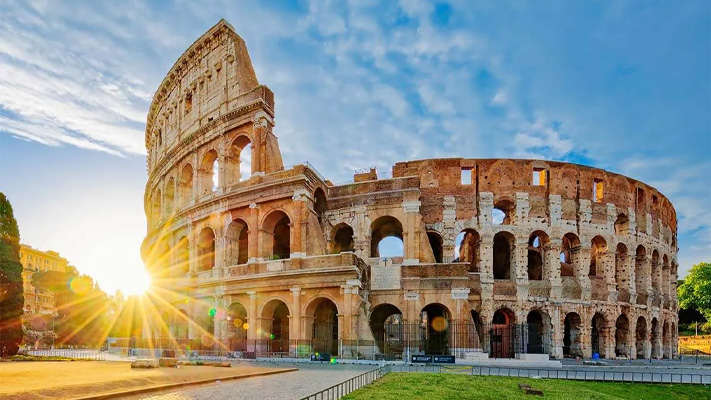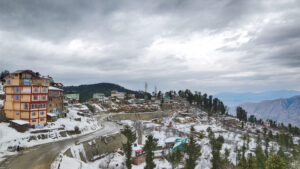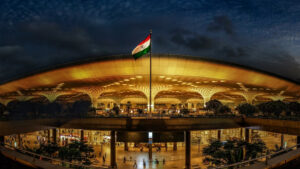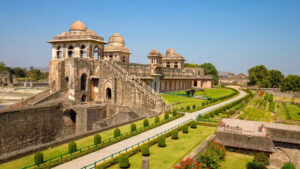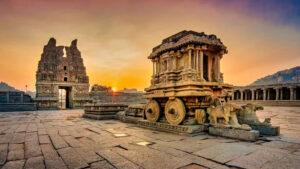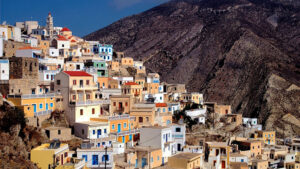THE COLOSSEUM, ROME – UNCOVER THE ETERNAL CHARMS AND ANCIENT GRANDEUR

The Colosseum in Rome, Italy, is an awe-inspiring landmark that stands as a testament to the grandeur and architectural genius of ancient Rome. This iconic amphitheater built nearly 2,000 years ago, continues to captivate visitors from around the globe with its monumental size and historical significance. As one of the most famous landmarks in the world, the Colosseum offers an immersive journey into the past, allowing visitors to walk in the footsteps of ancient Romans and experience the spectacles that once unfolded within its walls. With its rich history, architectural marvels, and cultural significance, the Colosseum remains an unmissable destination for those seeking a deeper understanding of Rome’s ancient legacy.

The Colosseum is an iconic landmark and one of the most famous historical sites in the world. Here are some reasons that make it stand out:
1. Historical Significance: The Colosseum, also known as the Flavian Amphitheatre, was built between 70-80 AD and served as the largest amphitheater in the Roman Empire. It was primarily used for gladiatorial contests, animal hunts, and other spectacles that entertained the ancient Romans.
2. Architectural Marvel: The Colosseum is renowned for its impressive architecture and engineering. It could accommodate up to 50,000 spectators and was a masterpiece of Roman engineering, featuring a complex system of ramps, elevators, and trapdoors to facilitate the elaborate spectacles.
3. Symbol of Ancient Rome: The Colosseum stands as a symbol of ancient Roman civilization and is a testament to the grandeur and architectural prowess of the time. It has become an iconic symbol of Rome and a UNESCO World Heritage site.
4. Visitor Experience: As a landmark destination, the Colosseum offers visitors a chance to explore its grand structure and learn about its historical significance through guided tours or self-guided visits. Inside, you can see the remains of the arena, seating areas, and underground chambers where gladiators and animals were held.
5. Arch of Constantine and Roman Forum: Adjacent to the Colosseum is the Arch of Constantine, a triumphal arch that commemorates Emperor Constantine’s victory. Nearby is the Roman Forum, an ancient marketplace that was the center of political, commercial, and social life in ancient Rome. Exploring these areas in conjunction with the Colosseum provides a comprehensive understanding of Roman history.
6. Cultural Importance: The Colosseum continues to captivate the imagination of visitors from around the world and remains a significant cultural and historical symbol. It is a popular destination for tourists, history enthusiasts, and architecture lovers who wish to experience the grandeur of ancient Rome.
7. Evening Illumination: The Colosseum takes on a magical aura when illuminated in the evening. Many visitors choose to witness the monument’s stunning nighttime transformation, adding to its allure and creating a memorable experience.
When visiting the Colosseum, it’s advisable to book tickets in advance to avoid long queues, especially during peak tourist seasons. Exploring this iconic landmark allows you to step back in time and marvel at the architectural brilliance and historical legacy of ancient Rome.

Inside The Colosseum
The inside of the Colosseum is filled with marvelous architectural and historical features that showcase the ingenuity and grandeur of ancient Roman engineering. Here are some of the marvels you can discover within the Colosseum:
1. Hypogeum: One of the most fascinating features of the Colosseum is its underground area, known as the hypogeum. This intricate system of tunnels, chambers, and elevators served as the backstage of the amphitheater. It housed gladiators, animals, and props, and facilitated their dramatic entrances into the arena.
2. Arena: The central area of the Colosseum is the arena, where gladiators and wild animals engaged in battles to entertain the crowds. The arena was once covered with a wooden floor, called the “arena floor,” which could be removed to reveal the chambers below.
3. Seating Arrangements: The seating arrangements within the Colosseum showcase the social hierarchy of ancient Rome. The lower levels were reserved for the elite, including senators, nobles, and emperors, while the upper tiers accommodated common citizens and non-privileged spectators.
4. Vomitoria: The Colosseum features a series of entrances and exits known as vomitoria. These passageways allowed the large audience to enter and exit the amphitheater quickly and efficiently.
5. Archways and Facades: The Colosseum is adorned with a series of impressive archways and facades. The arches served as entrances to the various seating sections and created a visually stunning exterior that is instantly recognizable.
6. Awe-Inspiring Dimensions: The sheer size of the Colosseum is a marvel in itself. It stands at approximately 48 meters (157 feet) tall, with a circumference of 527 meters (1,729 feet). The amphitheater could accommodate up to 50,000 spectators, making it the largest of its kind in the Roman Empire.
7. Construction Techniques: The Colosseum was built using innovative construction techniques for its time. The structure employed a combination of arches, vaults, and concrete, known as Roman concrete, which allowed for the creation of large, durable structures.
8. Retractable Awning: The Colosseum once featured a retractable awning, called the velarium, which was used to provide shade for the spectators on hot days or protection from the rain. This remarkable feat of engineering was operated by sailors using a complex system of ropes and pulleys.
9. Iconic Exterior: While primarily focusing on the inside, the Colosseum’s exterior is a marvel in itself. The multi-tiered structure, with its series of arches and columns, showcases the architectural prowess and artistic sensibilities of ancient Rome.
10. Enduring Legacy: Perhaps the greatest marvel of the Colosseum is its enduring legacy. Despite being subjected to centuries of natural disasters, vandalism, and neglect, the Colosseum has managed to survive as an iconic symbol of Rome and a testament to the architectural genius of its time.
Exploring the inside of the Colosseum allows you to appreciate the remarkable feats of ancient Roman engineering, the grandeur of the amphitheater, and the incredible history that unfolded within its walls.
Other Top Attractions Nearby
Apart from the Colosseum, Rome boasts numerous top attractions nearby that offer a rich blend of history, art, and cultural experiences. Here are some other must-visit attractions in Rome:
1. Roman Forum: Adjacent to the Colosseum, the Roman Forum was the center of political, commercial, and social life in ancient Rome. Explore the ruins of temples, arches, and government buildings that provide insights into the city’s glorious past.
2. Palatine Hill: Located near the Colosseum, Palatine Hill offers panoramic views of Rome and is considered one of the most ancient parts of the city. Visit the ruins of imperial palaces and gardens, including the impressive Domus Augustana.
3. Vatican City: A separate sovereign city-state within Rome, Vatican City is home to renowned attractions like St. Peter’s Basilica, the Vatican Museums, and the Sistine Chapel. Marvel at masterpieces by Michelangelo, Raphael, and other iconic artists.
4. Trevi Fountain: Toss a coin into the Trevi Fountain, a grand Baroque masterpiece, and make a wish. This iconic fountain depicts Neptune, surrounded by mythical figures, and is known for its dazzling beauty.
5. Pantheon: Explore the remarkable architecture of the Pantheon, a well-preserved ancient Roman temple that now serves as a church. Admire the massive dome and the oculus, a circular opening in the center of the ceiling.
6. Piazza Navona: Visit Piazza Navona, a lively square adorned with beautiful fountains, baroque architecture, and vibrant street performers. Enjoy the bustling atmosphere, outdoor cafes, and the famous Fountain of the Four Rivers by Bernini.

7. Spanish Steps: Climb the Spanish Steps, a famous staircase connecting Piazza di Spagna and Trinità dei Monti church. This picturesque spot is a popular gathering place and offers fantastic views of the surrounding area.
8. Villa Borghese Gardens: Escape the hustle and bustle of the city at Villa Borghese, a sprawling park filled with gardens, fountains, sculptures, and picturesque walking paths. It also houses the Borghese Gallery, which exhibits a stunning collection of art.
9. Capitoline Museums: Discover ancient artifacts, classical sculptures, and Renaissance art at the Capitoline Museums. This museum complex is located on Capitoline Hill and is the world’s oldest public museum.
10. Trastevere: Explore the charming neighborhood of Trastevere, known for its narrow cobblestone streets, colorful houses, and vibrant nightlife. Wander through its alleys, visit the Basilica of Santa Maria in Trastevere, and enjoy traditional Roman cuisine at local trattorias.
Shopping for Souvenirs
When it comes to shopping for souvenirs in Rome, you’ll find a plethora of options that reflect the city’s rich history, art, and culture. Here are some popular souvenir ideas and the best places to find them:
1. Italian Leather Goods: Italy is renowned for its high-quality leather products. Look for leather bags, wallets, belts, and jackets that showcase Italian craftsmanship. The streets around the Spanish Steps and Via del Corso are lined with shops offering a wide selection of leather goods.
2. Artisanal Gelato: Bring the taste of Rome home with you by indulging in artisanal gelato. Look for small artisanal gelaterias that offer a variety of flavors made with fresh, high-quality ingredients. Some popular gelaterias include Giolitti, Gelateria del Teatro, and Fatamorgana.
3. Italian Wines: Italy is celebrated for its excellent wines, and Rome offers numerous wine shops where you can find a wide selection of Italian vintages. Look for bottles of Italian reds like Chianti, Barolo, or Brunello di Montalcino, or whites like Pinot Grigio or Vermentino.
4. Religious Artifacts: Rome is the seat of the Catholic Church, so religious artifacts make meaningful souvenirs. Look for rosaries, crucifixes, religious medals, or small replicas of famous religious statues. Visit shops near the Vatican City or the Basilica of Santa Maria Maggiore for a wide selection.
5. Vatican-inspired Gifts: If you visit the Vatican City, you’ll find numerous shops offering Vatican-inspired souvenirs. Look for items like papal memorabilia, keychains, postcards, or Vatican-themed artwork. The Vatican Museums’ gift shop is a great place to find unique Vatican-related souvenirs.
6. Roman-themed Memorabilia: Look for souvenirs that feature iconic Roman symbols and landmarks. Items like miniature Colosseum replicas, Roman gladiator helmets, or Roman coin replicas can be found in various tourist shops throughout the city.
7. Handmade Ceramics: Seek out hand-painted ceramics that depict traditional Italian designs, such as colorful plates, bowls, or tiles. The Monti neighborhood near the Colosseum is known for its ceramic shops.
8. Antique Maps and Prints: Rome has a rich history, and antique maps or prints of the city can be fascinating souvenirs. Visit antique shops or street markets like Porta Portese Market on Sundays to find vintage prints or maps.
9. Gourmet Food and Spices: Explore the local food markets, such as Campo de’ Fiori or Trionfale Market, to discover gourmet food items like olive oil, balsamic vinegar, truffle products, or traditional Italian spices. These make great gifts for food enthusiasts.
10. Fashion Accessories: Rome is known for its fashion, and you can find trendy accessories like scarves, sunglasses, or stylish jewelry in the city’s boutiques and shopping streets like Via Condotti and Via del Babuino.
Must Try Cuisine
When in Rome, be sure to indulge in the city’s delectable cuisine. Here are some must-try dishes that showcase the flavors and culinary traditions of Rome:

1. Pasta alla Carbonara: This iconic Roman pasta dish features spaghetti or rigatoni tossed with a creamy sauce made from eggs, pecorino cheese, pancetta (cured pork belly), and black pepper. It’s a rich and satisfying dish that is a staple of Roman cuisine.
2. Cacio e Pepe: Another classic pasta dish from Rome, Cacio e Pepe is a simple yet flavorful combination of spaghetti, pecorino cheese, black pepper, and a touch of starchy pasta water. The result is a creamy and peppery delight.
3. Saltimbocca alla Romana: A popular Roman meat dish, Saltimbocca alla Romana consists of tender veal cutlets topped with prosciutto and fresh sage, then cooked in white wine and butter. It’s a delicious and elegant dish bursting with flavor.
4. Supplì: These delightful Roman snacks are deep-fried rice balls filled with gooey mozzarella cheese, tomato sauce, and sometimes bits of meat or vegetables. They are crispy on the outside and oozing with cheesy goodness on the inside.
5. Roman-style Pizza (Pizza Romana): Roman-style pizza is known for its thin and crispy crust. Toppings are typically simple, with classics like Margherita (tomato, mozzarella, and basil) or marinara (tomato, garlic, oregano). Enjoy a slice of authentic Roman pizza at local pizzerias.
6. Carciofi alla Romana: Artichokes are a beloved ingredient in Roman cuisine, and Carciofi alla Romana is a popular way to prepare them. The artichokes are trimmed, stuffed with garlic, mint, and parsley, and then braised in olive oil and white wine.
7. Maritozzo: Maritozzo is a traditional Roman sweet bun filled with whipped cream. It’s often enjoyed for breakfast or as a sweet treat throughout the day. The soft bun pairs perfectly with the luscious cream filling.
8. Abbacchio alla Romana: This traditional Roman lamb dish is a must-try for meat lovers. It features tender, slow-cooked lamb seasoned with garlic, rosemary, and white wine. The flavors are rich and hearty, representing the rustic side of Roman cuisine.
9. Tiramisu: While not exclusive to Rome, no visit to Italy is complete without trying Tiramisu. This beloved dessert consists of layers of coffee-soaked ladyfingers, mascarpone cheese, and cocoa powder. It’s creamy, indulgent, and a true Italian classic.
10. Gelato: End your culinary journey in Rome with a scoop or two of gelato. This Italian frozen dessert is known for its creamy texture and intense flavors. Seek out artisanal gelaterias for the best gelato experience.



